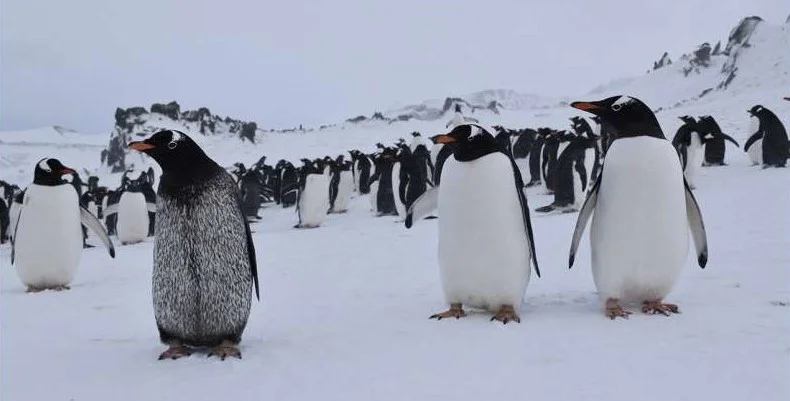A small team of biologists affiliated with various agencies in Argentina discovered a case of melanism in a wild Papuan penguin living in Antarctica. In an article published in the journal Polar BiologyThe group describes the specimen they observed and possible causes of its coloration.
Gentoo penguins living in Hope Bay, Antarctica, at the tip of the Antarctic Peninsula, usually have black tips of their wings and white undersides. Similarly, their hindquarters are usually black, while the fronts (except for the head) are usually bright white. This look gives them a tuxedo look like other penguins.
Previous studies have shown that the coloration is caused by helping birds avoid predators while in the water. Those above them will have trouble distinguishing the darkness behind them from the darkness of the ocean below, while those below them will have trouble distinguishing the sky above them with their white faces. Sometimes, however, mutations that cause abnormal coloration can occur.
In this new study, the research team found an example of a Papuan penguin with melanism; this means that some of its traditionally white front and underside are dark in color, giving it a mottled appearance.
This observation is not unheard of: Another team identified a king penguin with the same condition in 2010, but in this case an excess of melanin caused the front to be almost as black as the back. In this latest observation, the research team found no evidence of additional coloration on its white front that makes the penguin more susceptible to predators, and the penguin does not appear to be bothering other penguins in its colony. However, they were unable to confirm her sex or reproductive status; it is therefore unknown whether the unusual color prevents the penguin from finding a mate.
The researchers note that previous studies have shown that when looking at its frequency in other animals, melanism is likely to occur in one in about 250,000 penguins. Source
Source: Port Altele
